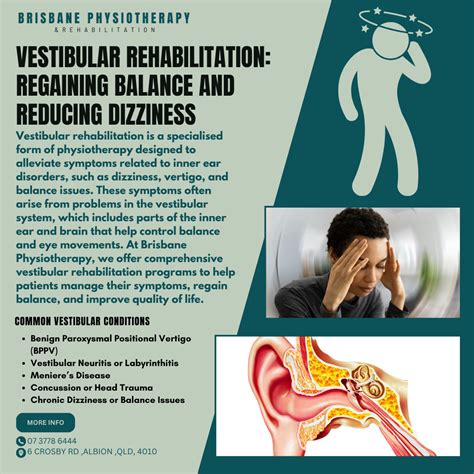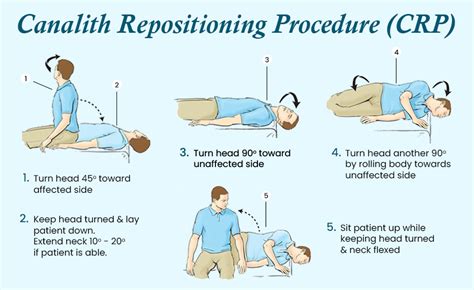Intro
Discover 5 effective ways to treat vertigo, including natural remedies, exercises, and lifestyle changes to alleviate dizziness, balance disorders, and inner ear problems, promoting vestibular health and relief from symptoms.
Vertigo is a condition that affects millions of people worldwide, causing a sensation of spinning or feeling like the environment around them is spinning. It can be a debilitating condition that interferes with daily activities and reduces the quality of life. The importance of understanding and addressing vertigo cannot be overstated, as it can have a significant impact on both physical and mental health. In this article, we will delve into the world of vertigo, exploring its causes, symptoms, and most importantly, ways to treat it. Whether you're experiencing mild dizziness or severe vertigo, this comprehensive guide aims to provide you with the knowledge and tools necessary to manage your condition effectively.
Vertigo is often associated with inner ear problems, but it can also be caused by other factors such as head injuries, certain medications, and even stress. The symptoms of vertigo can vary from person to person, but common experiences include feeling like you're spinning, losing balance, and experiencing nausea. Understanding the root cause of vertigo is crucial in developing an effective treatment plan. With the right approach, it's possible to alleviate symptoms and regain control over your life. In the following sections, we will discuss five ways to treat vertigo, providing a detailed look at the benefits, working mechanisms, and practical applications of each method.
Treatment Options for Vertigo

Vestibular Rehabilitation Therapy

Benefits of Vestibular Rehabilitation Therapy
The benefits of VRT are numerous and well-documented. Some of the advantages of this therapy include: * Improved balance and reduced risk of falls * Decreased frequency and severity of vertigo episodes * Enhanced overall quality of life * Customized exercise programs tailored to individual needs * Non-invasive and medication-free approachMedication for Vertigo

Types of Medication for Vertigo
Some common types of medication used to treat vertigo include: * Antihistamines: meclizine, dimenhydrinate * Anticholinergics: scopolamine * Benzodiazepines: diazepam, alprazolam * Anti-nausea medications: ondansetron, metoclopramideHome Remedies for Vertigo

Benefits of Home Remedies
The benefits of home remedies for vertigo include: * Convenience: home remedies can be done in the comfort of your own home * Cost-effectiveness: home remedies are often free or low-cost * Non-invasive: home remedies are a non-invasive way to manage vertigo symptoms * Empowerment: taking control of your treatment plan can be empowering and improve overall well-beingCanalith Repositioning Procedure

How the Canalith Repositioning Procedure Works
The CRP works by using a series of gentle maneuvers to move the otoconia out of the semicircular canals and into a part of the inner ear where they will not cause symptoms. This procedure is typically performed by a trained healthcare professional and can be done in a clinical setting.Lifestyle Changes for Vertigo

Benefits of Lifestyle Changes
The benefits of lifestyle changes for vertigo include: * Improved overall health and well-being * Reduced symptoms: lifestyle changes can help reduce the frequency and severity of vertigo episodes * Increased independence: making lifestyle changes can help you take control of your treatment plan and improve overall quality of life * Non-invasive: lifestyle changes are a non-invasive way to manage vertigo symptomsWhat are the most common causes of vertigo?
+The most common causes of vertigo include inner ear problems, head injuries, certain medications, and stress.
How can I manage vertigo symptoms at home?
+Managing vertigo symptoms at home can be done by staying hydrated, getting enough sleep, reducing stress, and avoiding triggers that can exacerbate symptoms.
What is the canalith repositioning procedure and how does it work?
+The canalith repositioning procedure is a non-invasive treatment that involves a series of maneuvers to move calcium particles out of the semicircular canals of the inner ear. It works by using gentle maneuvers to move the particles into a part of the inner ear where they will not cause symptoms.
We hope this comprehensive guide has provided you with a deeper understanding of vertigo and its treatment options. Whether you're experiencing mild dizziness or severe vertigo, there are many ways to manage symptoms and improve overall quality of life. By working closely with a healthcare professional and exploring the various treatment options available, you can take control of your vertigo and start living the life you deserve. If you have any questions or comments, please don't hesitate to share them with us. Your feedback is invaluable, and we look forward to hearing from you. Remember, you're not alone in your journey with vertigo – there are many resources available to support you every step of the way.
